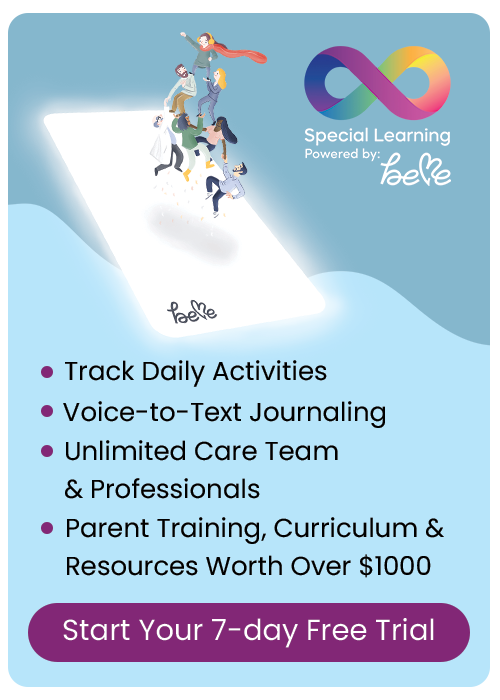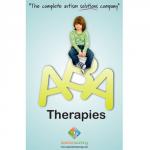Blog Categories
- ADHD
- Applied Behavior Analysis
- Autism Awareness
- Autism Service Providers
- Case Studies
- Dignosis
- Classroom Management
- Credentials
- Ethics
- Family Matters
- FAQs About LIVE Events
- Financial Planning
- Holiday Planning
- IEP's
- Panelists
- Private Equity in Autism & ABA Industry
- Psychopharmacology
- Sensory Processing Disorder
- Speech and Communication
- Subject Matter Experts
- Summer Planning
- Transition Planning
What are file folders and how do they help?
As a clinic transition director she directs the treatment plans of multiple clients through management, training and supervision of clinical staff. Before her involvement with SBSA she worked as an Intervention Specialist in Applied Behavioral Services, where she was responsible in the implementation of treatment of multiple clients and their families through teaching and training in the classroom and home environments. Her extensive experience in the field of Behavior Analysis allowed her to successfully conduct presentations, workshops and conferences on topics: PECS for Parents: learning and using the first 3 phases of PECS with your child in the home; Implementing Direct Instruction Curricula with Learners with Autism Spectrum Disorders; Differentiated Instruction; and Introduction to Applied Behavior Analysis. Miranda is from Columbus, Ohio. She earned her Bachelor of Science in Mild-Moderate Special Education at Xavier University, Cincinnati, OH, completed a graduate coursework in Behavior Analysis in the University of North Texas, Denton TX; and she is anticipating the completion of her Masters of Education in Cognitive and Behavioral Disabilities at the Nova Southeastern University in Fort Lauderdale, FL, in August 2012. Miranda is affiliated with the Association for Applied Behavior Analysis International; Ohio Association of Behavior Analysts; Council for Exceptional Children; and Association for Direct Instruction.
What are file folders and how do they help?
Often called file folder games or file folder activities, these are matching activities that provide visual structure and repeated practice on skills and concepts to allow for mastery or maintenance of matching skills. Once a skill has been mastered in a file folder, it can become part of a student’s maintenance routine or it can become part of an independent work system.
File folders are appropriate for students who have the ability to recognize, discriminate and understand pictures. If a student is unable to do so and does better with 3-d/actual items, then fine motor boxes or task boxes would be a more appropriate option. File folders can also be made to be as short or long of an activity as a student has the attention span to complete and the complexity/duration can be increased as the student learns the skill. File folders help increase students ability to work independently, or without adult/teacher prompting or redirection.
File folders are typically manila folders with directions or a name on the front cover and the activity inside. File folders are laminated and pieces can have Velcro so they are durable and re-usable without the pieces sliding around. A pocket can be added to the back of the folder by attaching an envelope before it is laminated. The pocket can be used to keep the pieces together while the folder is stored.
Another option is to make the activities on single-sheets of paper and have the stimuli velcroed in strips across the bottom of the page.
File folders can be created for students to work on a variety of skills. Below is a list of ideas based on skill area. File folders can be created for almost any skill, the below is just a sampling
- Beginning matching and sorting colors, shapes, pictures, non-identical matching
- More advanced matching, serration,
- Reading skills: matching letters, letter sequences, matching words to words and pictures, rhyming words and word families, matching phrases and sentences to pictures (beginning reading comprehension)
- Math skills: matching numbers, number sequences, number to quantity match, basic computation problems, time matching, matching coins to values, counting mixed coins and matching to
- Written expression: filling in missing words from sentences, adding punctuation to the ends of sentences
- The Special Learning store has 3 sets of beginning matching file folders available: colors& ahapes, letters and numbers. https://special-learning.com/store/product/17
- While useful, file folders do have their limitations.
- The stimuli within the file folder is always presented in the same sequence/order which could limit the student’s generalization of the skill unless multiple file folders are created for the same skills.
- They are mostly limited to only skills that can be worked on by some type of matching.
Activities don’t have to be matching by Velcro. They can also be laminated for the student to write. This expands file folders. This helps lessen the second limitation above. Special Learning has independent work binders that are a combination of traditional matching tasks, draw match tasks (drawing a line to connect two items on different sides of the page) and written responses. https://special-learning.com/store/99/1
RECOMMENDED PRODUCTS
Curso ABA en Línea Con Subtitulos en Español (Level 1 ABA Online Training Course – Spanish)




